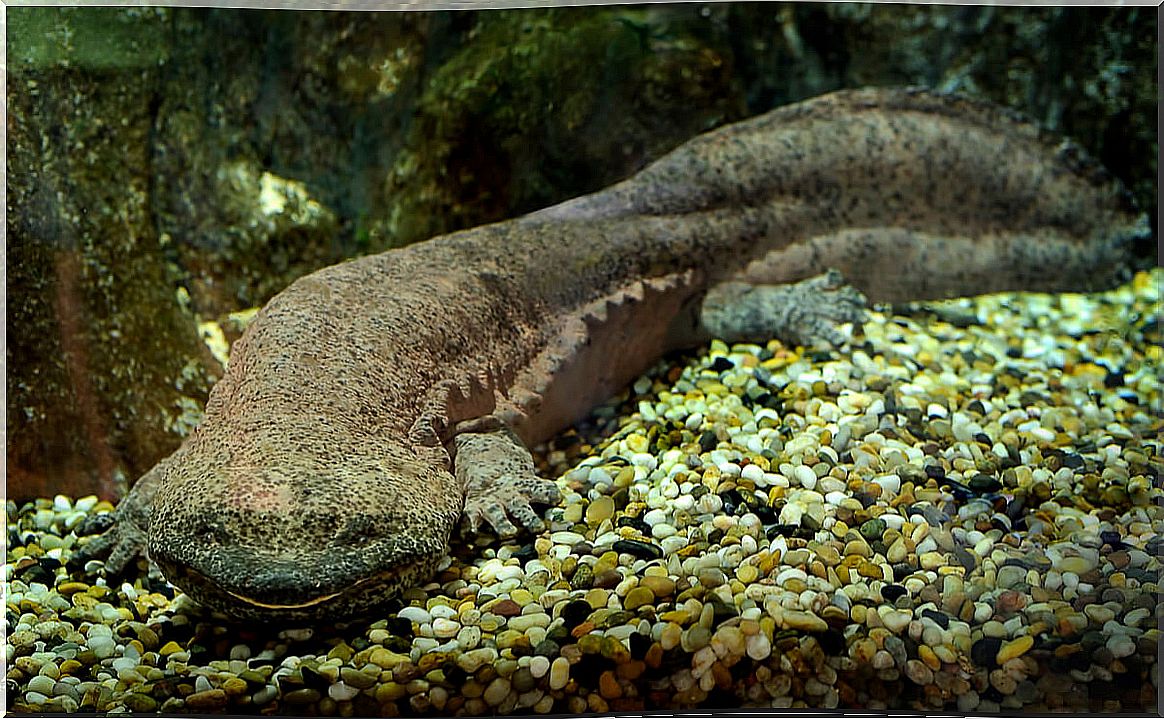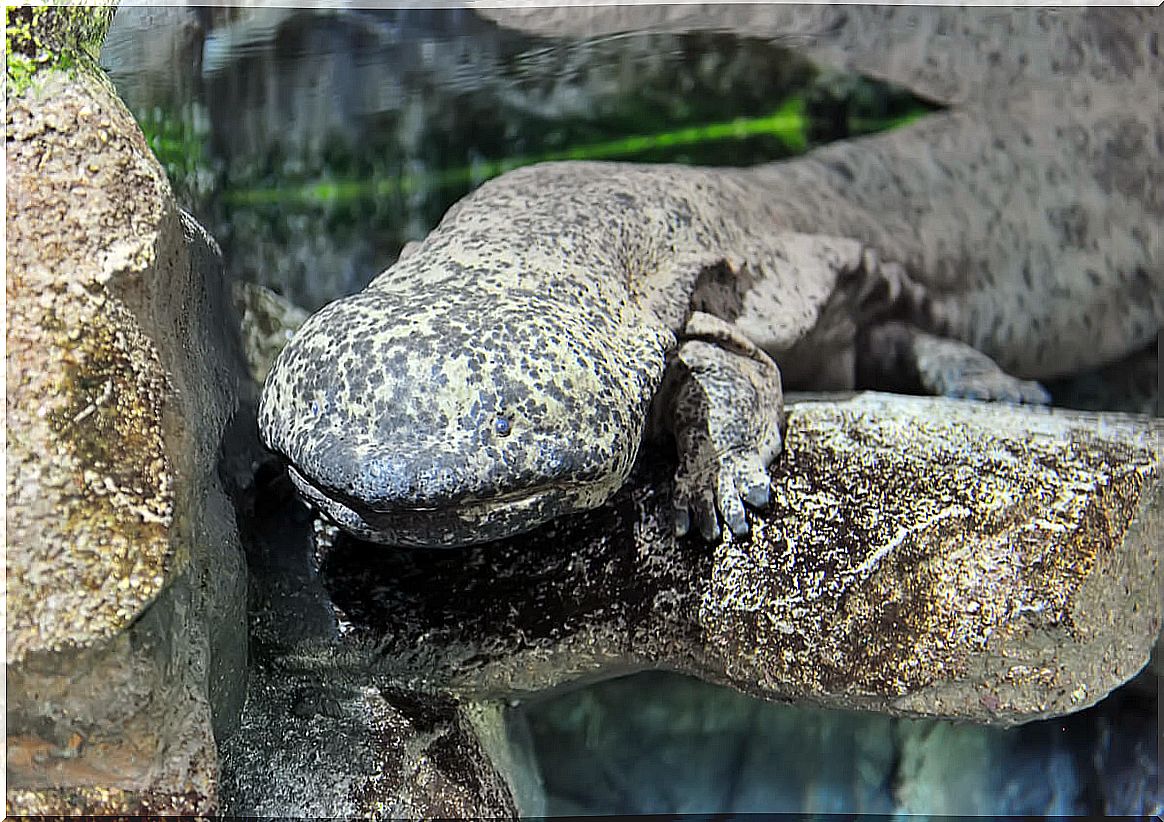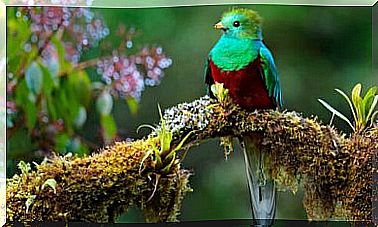The Largest Amphibian In The World

Nature is full of secrets that remain hidden from human eyes. For example, you may be surprised to discover that until 2019, the largest amphibian in the world was still unknown. How is it possible that an animal 115 centimeters long could have remained in the shadows for so long?
As in many other things in life, the secret is in the genes of the animal. If you want to know more about the largest amphibian in the world, including its customs, morphology and threats, read on.
About giant salamanders
Before entering fully into the world of this fascinating being, it is necessary to contextualize the group to which it belongs. Giant salamanders make up the Cryptobranchidae family , which until now contained two species, spread across China, Japan and the United States. These were Andrias davidianus and Cryptobranchus alleganiensis.
The Chinese giant salamander ( Andrias davidianus) was considered the largest amphibian on earth. These are some of its characteristics:
- It is an amphibian with small eyes and a large, flat head.
- It is dark in color, greyish in general, with mottling.
- It can reach up to 50 kilograms and 18 meters in length.
- It feeds on insects, fish, other amphibians, and crayfish among other prey.
- Its vision is very limited, so it hunts with the help of sensory nodes scattered throughout its body, which detect the vibrations in the water produced by its prey.
The Chinese giant salamander was described in 1837, so it is normal that at this point all readers wonder: how is it possible that a new species was discovered in 2019? As we have previously indicated, the secret lies in genetics.

The largest amphibian in the world
A recent study published in the journal Ecology and Evolution gives us answers to the question posed earlier. Through the genetic analysis of samples present in museums, it was discovered that the Andrias davidianus species was not just one, but at least three different species .
One of them is Andrias sligoi , the giant salamander of southern China. This was described in 1924, but in the absence of genetic evidence of its difference as a species, it ended up being encompassed indistinctly with A. davidianus. This study rescues the previously suspected differentiation, since not only Andrias sligoi is a different species, but the largest giant salamander in the world.
This recent discovery is fascinating, since the largest amphibian species in the world was, until recently, encompassed within a species that did not belong to it. Genetic analysis and laboratory studies allow these differentiations to be made in species that, visually, are practically the same.
What is the significance of this discovery?
Beyond obtaining knowledge, which by itself validates the investigations, these data have a practical utility. According to the red list of the International Union for Conservation of Nature (IUCN), the Chinese giant salamander is critically endangered.
The greatest dangers these amphibian giants face are habitat loss, poaching, and the modification of their natural dynamics through ranching. As strange as it may seem, these species are kept in hatcheries due to their culinary interest and prized meat. In facilities prepared for this purpose, the salamanders number in the thousands, but the wild populations are seriously threatened.
In the past, these farms used to release captive-bred specimens in wild environments to encourage the repopulation of salamanders. Not knowing that Andrias davidianus was not one species but at least three, the wrong species could have been dropping in the wrong place. This would favor competition for resources, disease transfer and hybridization between species, something deleterious for natural populations.
This is why knowing the different species that make up the genera of living beings is so essential. Each one requires specific care and territory, so unconsciously mixing it up can only make the situation worse.

Research is essential
As we have seen, genetic studies of animal populations are essential for their survival and well-being. We cannot forget that without science there is no knowledge, and without it, planning protection programs is totally impossible.
That is why from here we encourage readers to be interested in the panorama of science that surrounds the animal world. Fascinating discoveries like this are regularly produced that facilitate the preservation of animals in their natural environment.









